More public spaces in Singapore getting spruced up
An art installation using umbrellas on trees is one of a few projects jazzing up public spaces in Singapore
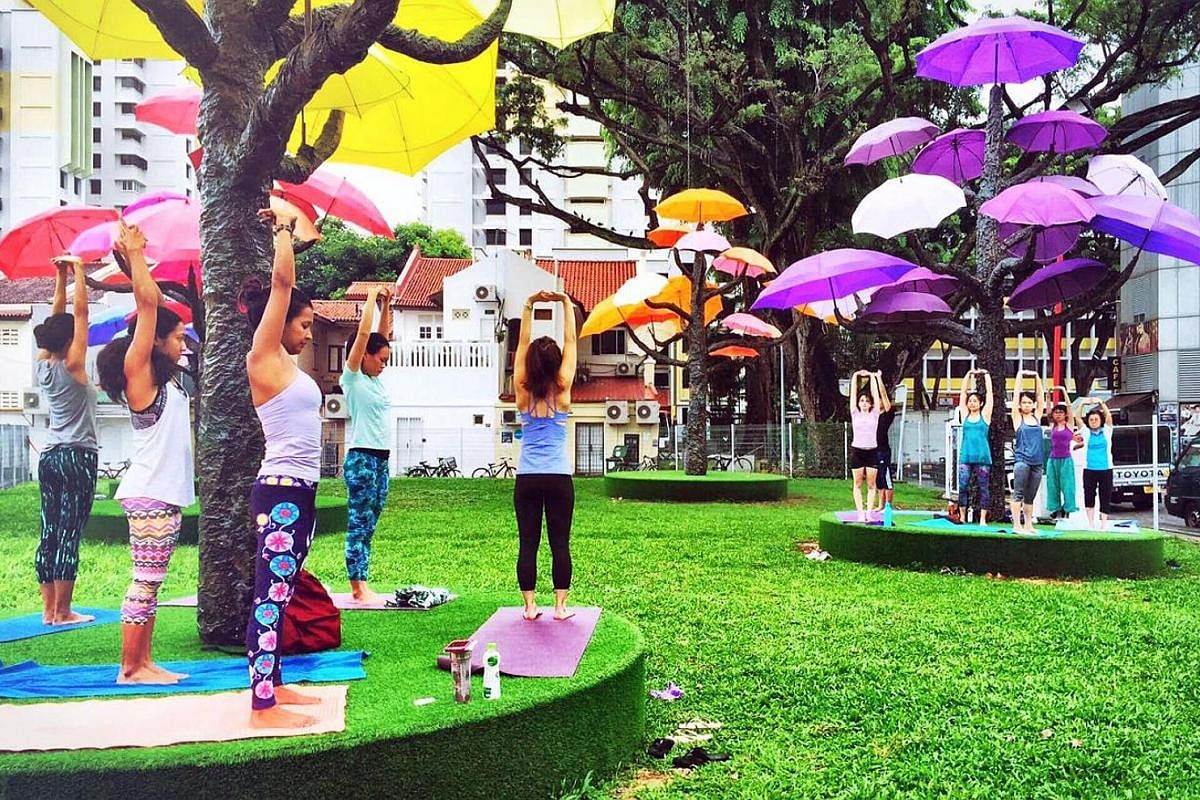
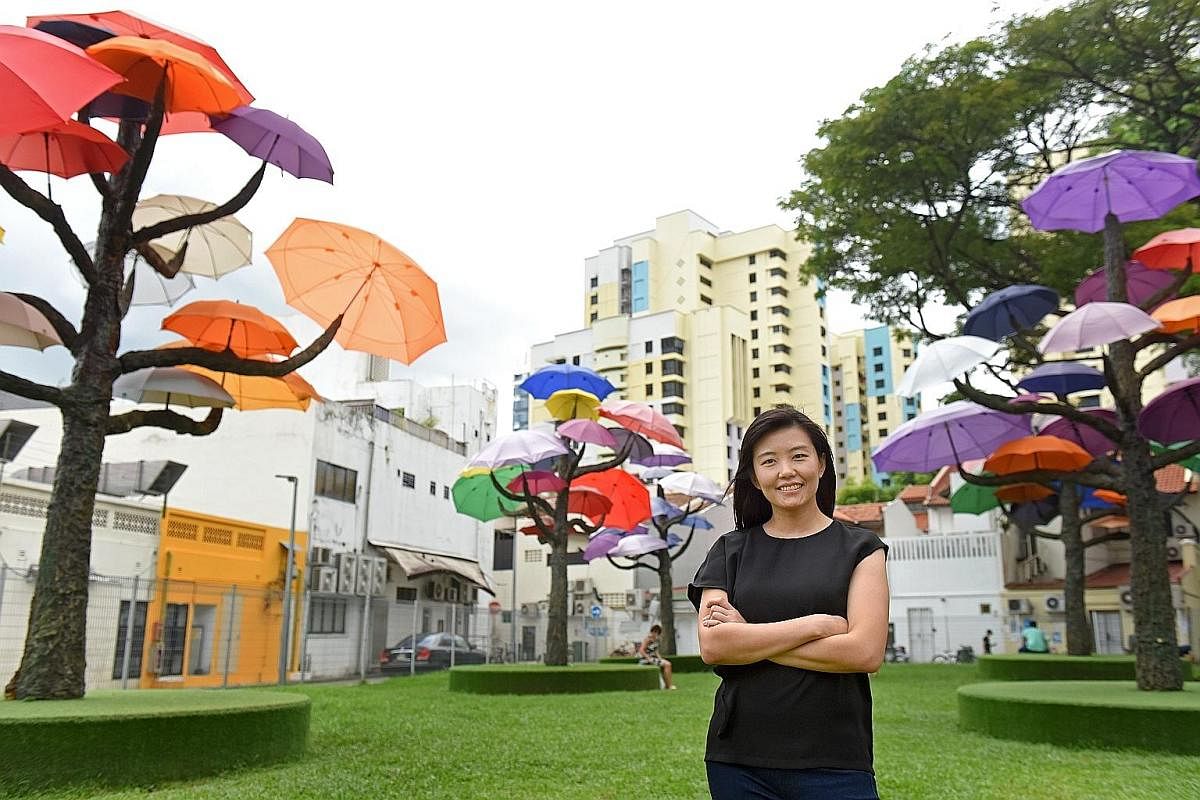
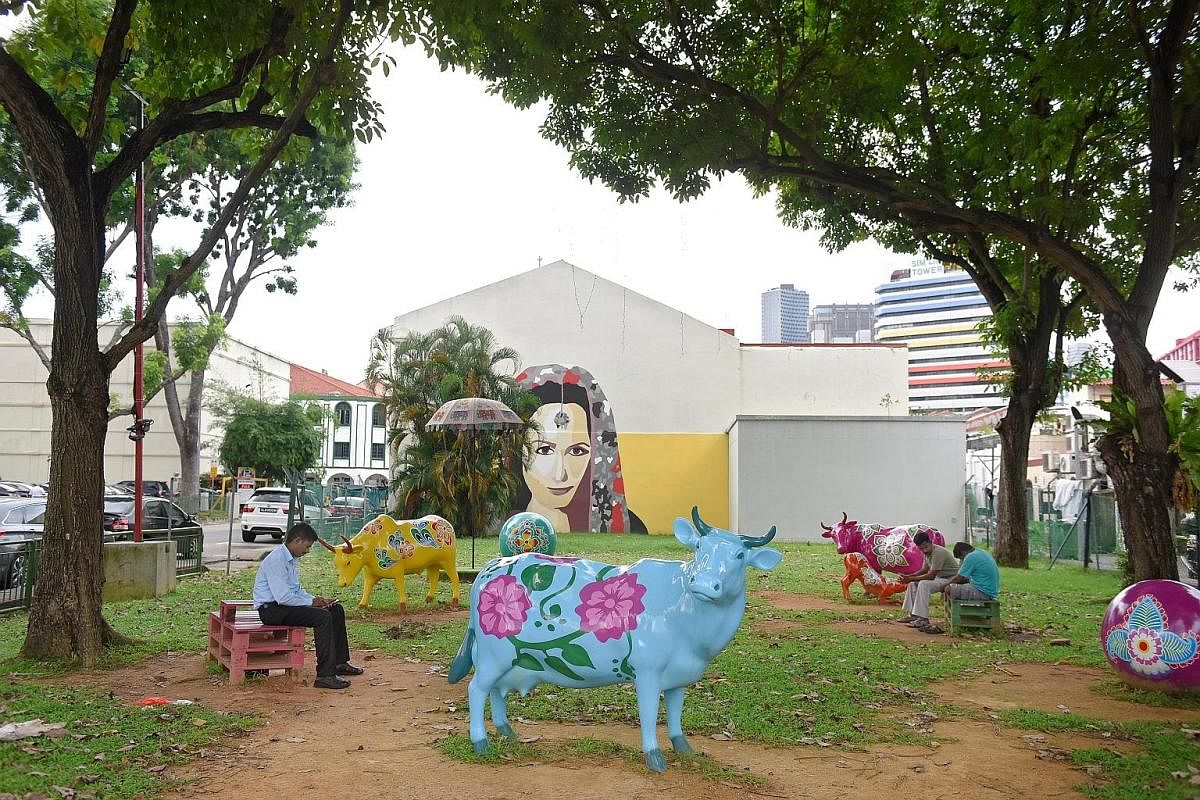
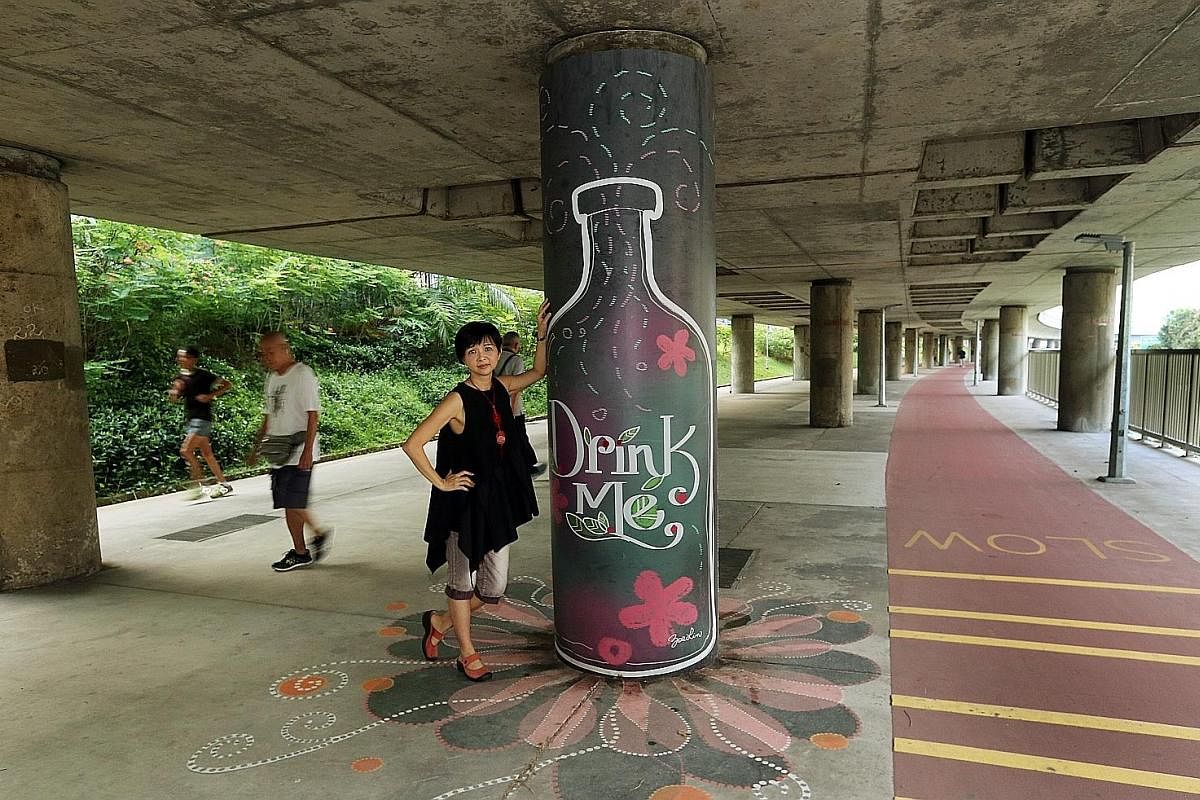
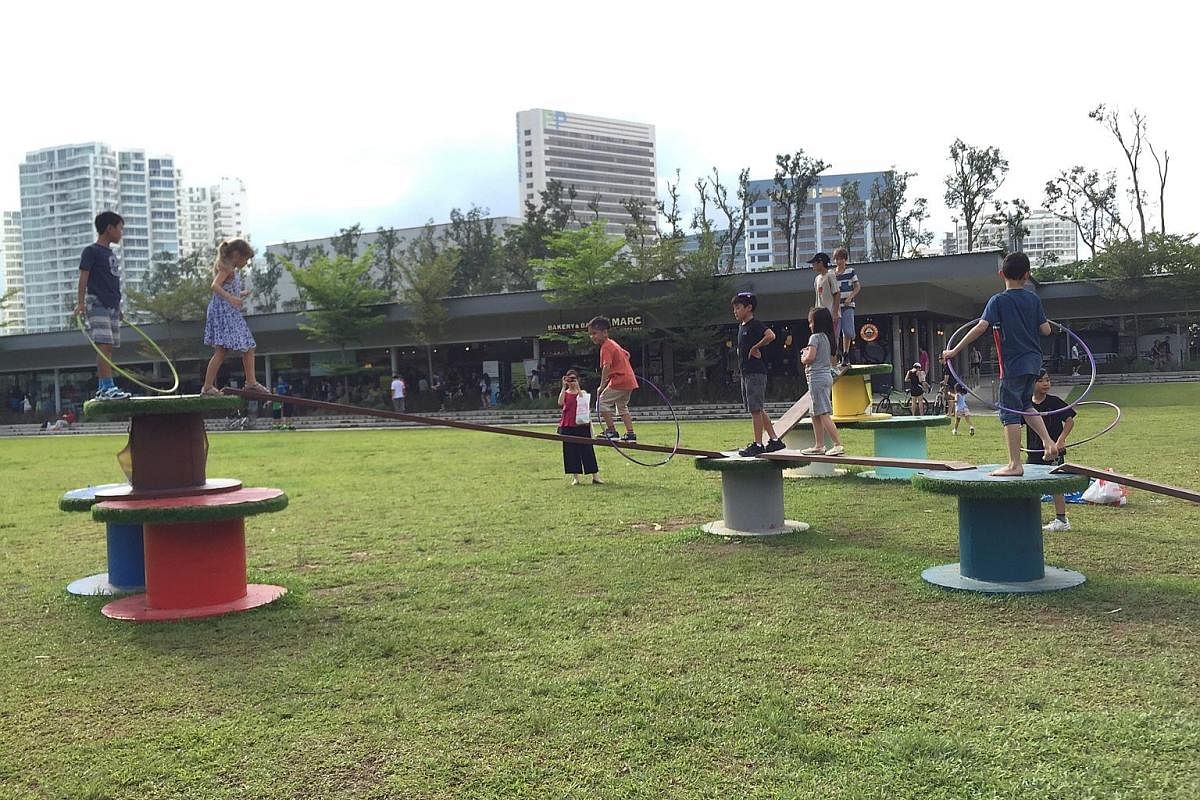
A group of designers fitted an under- utilised space between two HDB blocks in Aljunied Crescent with swings, gardens and areas where the young and old can chat and hang out.
Elsewhere, three friends found a new use for old pianos by putting them in various public venues for people to play on.
These are just two of the community-led initiatives under Our Favourite Place programme by the Urban Redevelopment Authority (URA), which aims to perk up public spaces through good design.
Ms Chou Mei, group director of conservation and urban design at URA, says public spaces are like the living rooms of cities. "They provide spaces for people to linger, bond and interact with one another," she says.
She adds that "well-designed public spaces with good programming not only foster community interaction and bonding through shared experiences, but also provide a more liveable environment and improve quality of life for our people".
The programme to enliven public spaces through pop-up installations that bring people together was piloted in 2013.
To encourage the community to get involved, the URA ran a competition called My Ideas For Public Spaces and events such as Park(ing) Day, which transformed carparks into temporary public spaces for other purposes.
The competitions drew about 160 submissions each time, with the last two editions held in 2013 and 2015.
Due to growing interest, the pilot programme was formalised last April and is now known as Our Favourite Place. So far, it has supported nine pop-up installation projects, each lasting from a day to a few months.
Some initiatives such as the used piano project, which was called Play It Forward, are so popular that they have been held multiple times and have travelled to various locations.
Successful applicants to the programme can get varying levels of support from URA, including up to $5,000 seed funding for short-term projects of six months or fewer, or up to $10,000 for longer-term projects of more than six months.
Dr Chong Keng Hua, an assistant professor of architecture and sustainable design at the Singapore University of Technology and Design, says that good public space designs can improve not only the liveability of a city, but also its lovability.
He says: "In a dense urban environment, public spaces serve as the most important breathing spaces among the crowded buildings and busy roads. They encourage us to pause and enjoy a place, to interact with others, rejuvenate our minds and heighten our spirits. They are probably what makes us fall in love with a city."
He adds that more can be done for the public spaces here.
"We can expand our zoning regulations to allow for more hybrid space type. This offers more choices of activities for diverse groups of people within one place."
For instance, the commercial can co-exist with the social and a coffee shop or cafe can be designed around a playscape or a community garden.
On the other hand, Dr Chong says that niche areas for specific interests can also be developed to offer people unique experiences.
Citing the Muscle Beach at Santa Monica in California as an example, he says it offers a designated public space for people to show off their muscles and gymnastic abilities.
To find out if an idea is feasible before implementation, an experimental model, similar to The Market Street Prototyping Festival in San Francisco, might be useful, says Dr Cho Im Sik, an assistant professor at the department of architecture at the National University of Singapore.
During the three-day festival, members of the community - including citizens, artists, designers and architects - come together to test their models or prototypes to enliven the sidewalks. Passers-by then give feedback on these models, which include performance, educational and green spaces as well as interactive art installations.
Dr Cho says this process lets themakers refine their prototypes so that they can be improved.
She says a well-designed public space "can help build community pride and become central to the cultural identity of a place".
For instance, the design can be inspired by the history of a place or it can be co-created with the community to reflect the collective aspiration of the place and its people.
A design consultancy that regularly involves the community in its design of public spaces is the non- profit Participate In Design, which led the project to convert the under- utilised space in Aljunied Crescent.
This came after a series of discussions with residents, grassroots leaders as well as seniors and staff from the Geylang East Home for the Aged, which was located at one of the blocks, on how the area can be made more appealing for them. The project was an initiative under Our Favourite Place programme.
Participate In Design's co- founder and director Mizah Rahman, 30, says a good public space design should considerthe aesthetics and the needs of the user.
She says: "When the community or 'local experts' are involved in the design process, they will develop a sense of pride and ownership of that space and take good care of it even after the design experts leave."
• The 2017 edition of My Ideas For Public Spaces is open for entries till May 15. For more information, go to www.ourfaveplace.sg and click on the tab titled "Get Involved".
Three spots to check out
Brolly boost in Little India
Artwork: Project Oasis at Little India (Poli)
Year: 2016
Place: Little India
Walk along Hindoo Road and you can catch sight of five two-storey- high "trees" with colourful umbrellas for their branches and leaves.
People can be seen sitting on the green round platforms at the foot of the trees, resting or chatting with their friends.
In Clive Street - a five-minute walk away from Hindoo Road - you can see seven life-sized fibreglass cows on the grass in various poses - sitting, walking or eating grass.
These two art installations, on previously unused grounds, are based on the designs by Indonesian- Chinese event and exhibition designer Marthalia Budiman, 35, a participant in the Urban Redevelopment Authority's My Ideas For Public Spaces: Forgotten Spaces Competition in 2015. The artworks have been up since April last year.
Ms Budiman, who has lived in Singapore for 10 years and is a Singapore permanent resident, says in her visits to Little India, she has noticed that it can get quite crowded especially on weekends, but there were not many public spaces dedicated for people to gather.
"I wanted to transform some of the abandoned or forgotten spaces there into something more positive and functional for the community," she says.
Hence the umbrella trees provide shade and seats to those seeking a respite from the sun while, at the same time, showcase the vibrant colours that are integral in many facets of Indian culture.
Meanwhile, the designs of the cattle in Clive Street were more inspired by the history and culture of the area, which is famous for cattle trading in the 1800s. The patterns on the cattle are adapted from Indian cultural motifs.
The projects are funded by the Little India Shopkeepers & Heritage Association (Lisha), with the Singapore Tourism Board. Lisha declined to reveal the costs.
She was gratified to see people posting photos of the art installations on social media with positive remarks. She says: "Through social media, I also found that people were doing yoga there and that the area was also visited by tourists."
Lisha has also organised Deepavali celebrations and art competitions as well as cultural programmes by different ethnic groups in the spaces.
Mr Rajakumar Chandra, 59, chairman of Lisha, says the installations were supposed to last seven months, but because they were so well- received, they have been extended till December this year.
He adds: "We are also looking into turning other public spaces in Little India into similar resting areas."
Culinary anthropologist N. Nithiya, 32, who runs the non-profit Free Yoga for Little India at the umbrella trees area on Sunday mornings, finds the space cheery and inviting. The yoga sessions are temporarily on hiatus and will resume in July.
"In the past, it was a space where people just walked past or parked their bicycles. But now, it is a space where people stay to take a rest, have a drink or, like us, do yoga."
Ang Mo Kio's bottled messages
Artwork: Ang Mo Kio Cycling Town Art Installation
Year: 2016
Place: Under Ang Mo Kio MRT viaduct
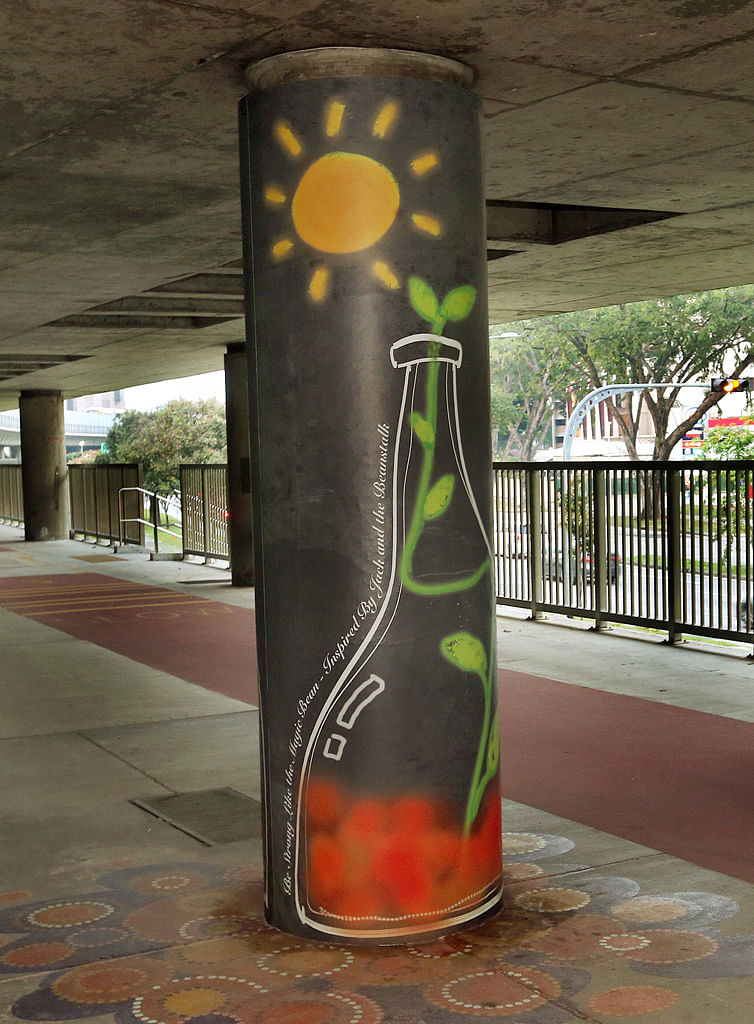
Cyclists and pedestrians using the path under the Ang Mo Kio MRT viaduct may have noticed colourful works of art on three columns: They are of bottles that are inspired by well-known children's stories such as Alice In Wonderland, Jack And The Beanstalk and The Crow And The Pitcher.
These were the ideas of Taiwan- born interior designer Zoe Lin, who was a winner in the Urban Redevelopment Authority's (URA) My Ideas For Public Spaces competition in 2015.
The 52-year-old came up with the idea while she was living in Ang Mo Kio from June 2014 to November 2015 and had used to brisk walk for exercise under the viaduct.
"It was a busy place. There were elderly people reading the newspaper on benches, people rushing to work and others jogging. It was also a beautiful place due to the greenery nearby. I thought to myself that more could be done to the space to engage the people using it."
So, when she read about the URA competition in a newspaper, she decided to design something for the area.
Ms Lin, who moved to Bishan in November 2015, says: "I wanted to provide passers-by with positive and encouraging messages."
For instance, one artwork was inspired by Alice In Wonderland. It has a "happiness" bottle with the words, "Drink Me", while the other side of the column shows that the bottle contains various aspects of happiness such as love, joy and peace.
At the next column, the artwork features the "magic bean" in the Jack And The Beanstalk story. One side shows the moon and a seed lying at the bottom of a bottle, while the other shows the sun and a sapling.
She says: "I wanted to tell people not to give up hope when they are faced with difficulties. One day, the sun will be out and they can be strong again like the magic bean."
Ms Lin, a Singapore permanent resident who is married to a Singaporean supply chain manager, drew the designs on a digital drawing tablet. She then printed them out and pasted them on the columns. She also drew the patterns on the ground adjoining the columns.
The project took her three days, with the help of three URA staff.
She says: "When I was painting the patterns, several passers-by commented on how beautiful the patterns and artwork were and I was very encouraged."
She did not spend any money on the project except to invest in a tablet for her drawings.
She completed her work last July and has since visited the area a few times. She was disappointed, however, to see dog pee staining the bottom of the columns and also rental advertisements pasted on the columns. She says: "Maybe people cannot get the messages I am trying to convey immediately."
Have a spool party in East Coast
Installation: Cable Spool Playstreet
Year: 2017
Place: Parkland Green, East Coast Park
Wooden cable spools are usually found at construction sites. But for the last 11/2 months, eight of them have made their home at Parkland Green in East Coast Park.
Painted with bright colours and connected to one another by wooden planks or sometimes stacked on top of one another, these "wheels" form a pop-up installation that allows children to climb to a height of 1.8m.
The interactive installation is the brainchild of the non-profit public health organisation, Singapore Wellness Association (SWA).
It was approached by the Urban Redevelopment Authority's Our Favourite Place team last August to propose a semi-permanent place- making solution.
Ms Sonia Ong, 34, executive director of the association, says she chose cable spools because she found them to be, among other things, "novel, attractive and highly interactive".
The installation challenges children on social and personal levels.
She says: "On a crowded day, kids must negotiate their way around the planks and decide whether to backtrack, move forward or wait on a spool when another kid approaches them.
"The installation also challenges children (and their parents) to take risks and conquer their fear of falling and heights."
To make the spools childproof, contractors hired by the association removed potential dangerous parts such as uneven, rough and sharp surfaces as well as protruding nails. The spools were then smoothened and painted in colourful hues.
Once a month, contractors also check if maintenance works are needed.
SWA also hired a professional engineer to certify that the installation was safe and bought public liability insurance.
All in, it spent about a five-figure sum, of which $10,000 would be reimbursed by the URA.
The association also organises Playstreets SG, which encourages children to exercise through play and takes place almost every weekend at a public venue.
It has held two such events at the cable spools, which drew about 100 people each time.
Polytechnic lecturer Sze Toh Khai Munn, 39, and his two children, aged 11/2 and seven, joined the Cable Spool Playstreet party at Parkland Green last month.
He says: "It's different from the usual playground where you have swings and slides.
"What kids can do here is really up to them and their parents' creativity."
• For the next Cable Spool Playstreet party and other Playstreets SG events, go to www.wellness.org.sg/2017-calendar
Join ST's Telegram channel and get the latest breaking news delivered to you.
A version of this article appeared in the print edition of The Straits Times on April 22, 2017, with the headline More public spaces in Singapore getting spruced up. Subscribe
